Advertisement
Horror And History Collide In 'Witch City' For Halloween
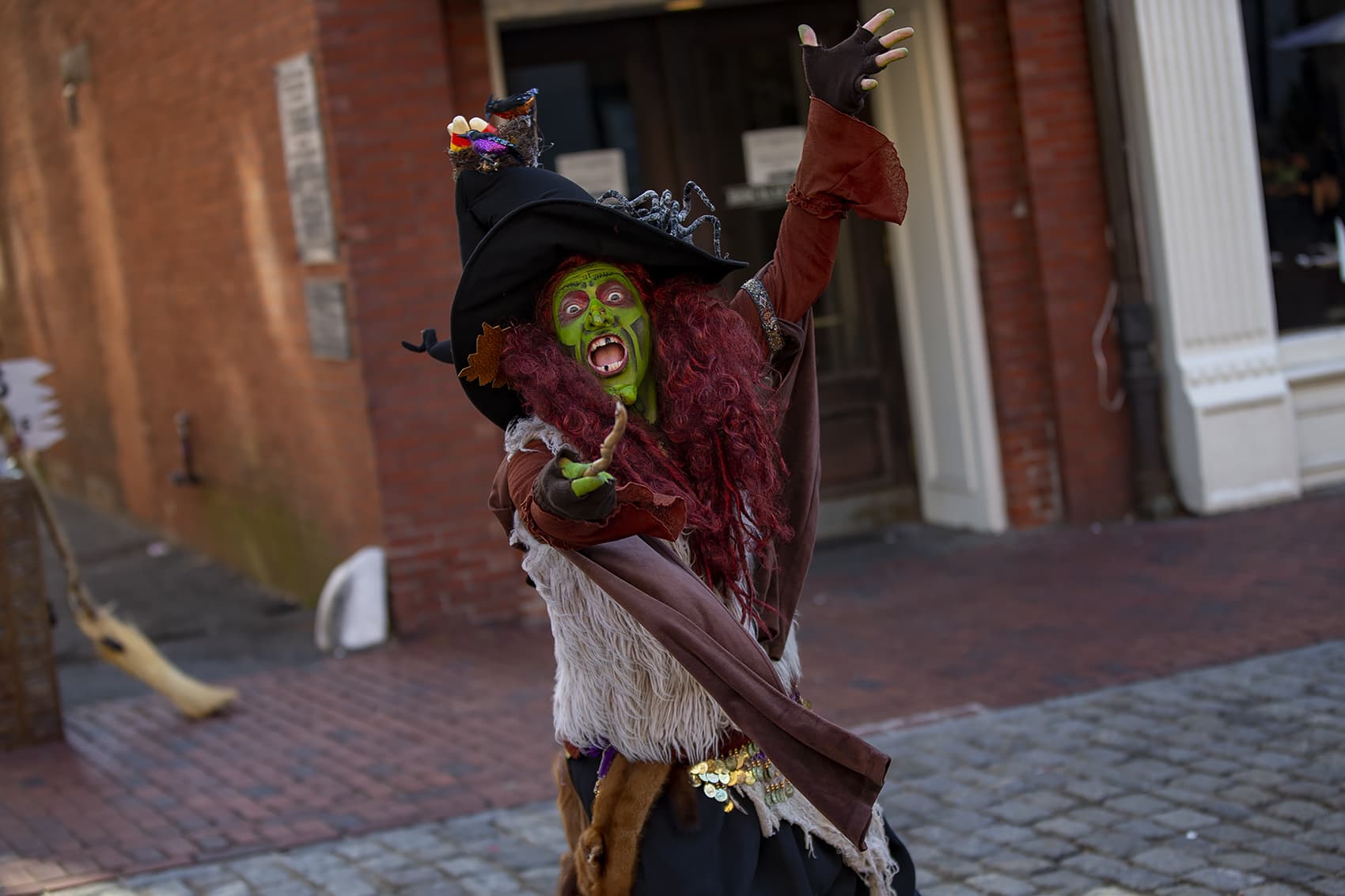
Halloween lands on Thursday but the spooky, consumer-driven holiday has been possessing Salem for weeks. In October, an estimated half-million visitors descend on “Witch City” (the population is approximately 43,000) seeking scares in a town known for the witch trial hysteria of 1692.
Balancing Salem’s dark history with the commerce and horrors of Halloween is a delicate dance. Everything and everyone collide on Salem’s open-air, pedestrian mall. It’s a brew of musicians, merchants selling pointy hats and costumed, licensed performers including Borah Brewington Snaggletooth the 13th (aka Brian Sims).
The playful, extravagantly decked-out theatrical witch entices a couple to take a picture with him. Borah also asks a passerby to snap the shot then screams, “dead bodies!” the way some of us say “cheese.”
The scene speaks to the tension between Salem’s carnival vibe in October and its horrifying past of violence against men and women accused of witchcraft. Opportunities to engage with both are everywhere. It can be overwhelming, so the city puts up a seasonal visitors’ center to guide people.
"They know Salem-witch, and they know witch-Halloween, and they don't necessarily understand what all the connections are,” Kate Fox tells me, “so I think it's our job to help connect the dots.”
Fox is executive director of Destination Salem, the city’s marketing organization. She jokes her job often entails teaching lessons in, “which witch is which,” especially at Halloween.
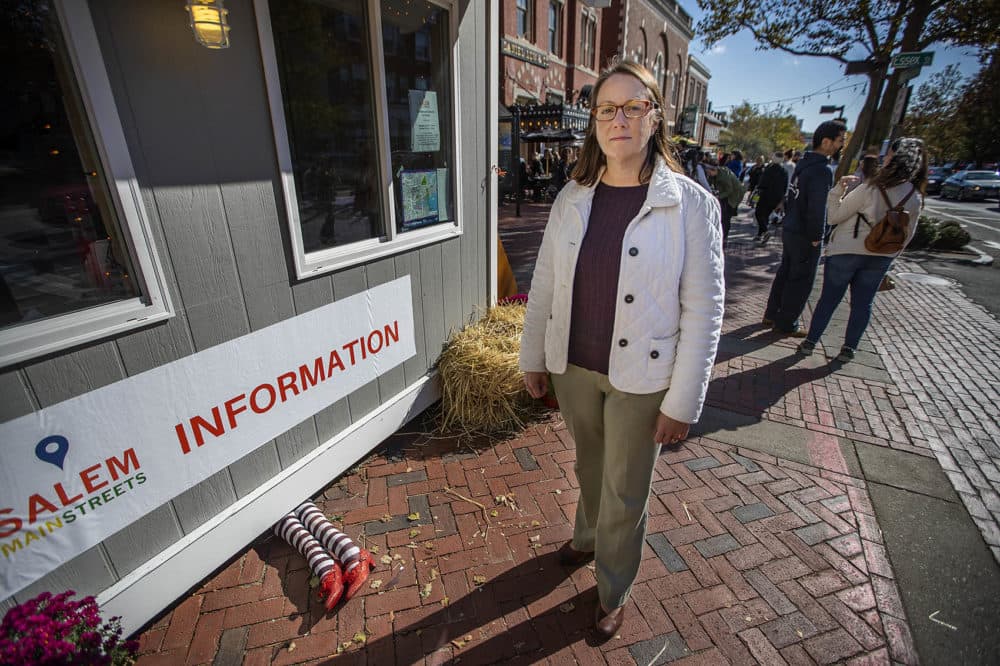
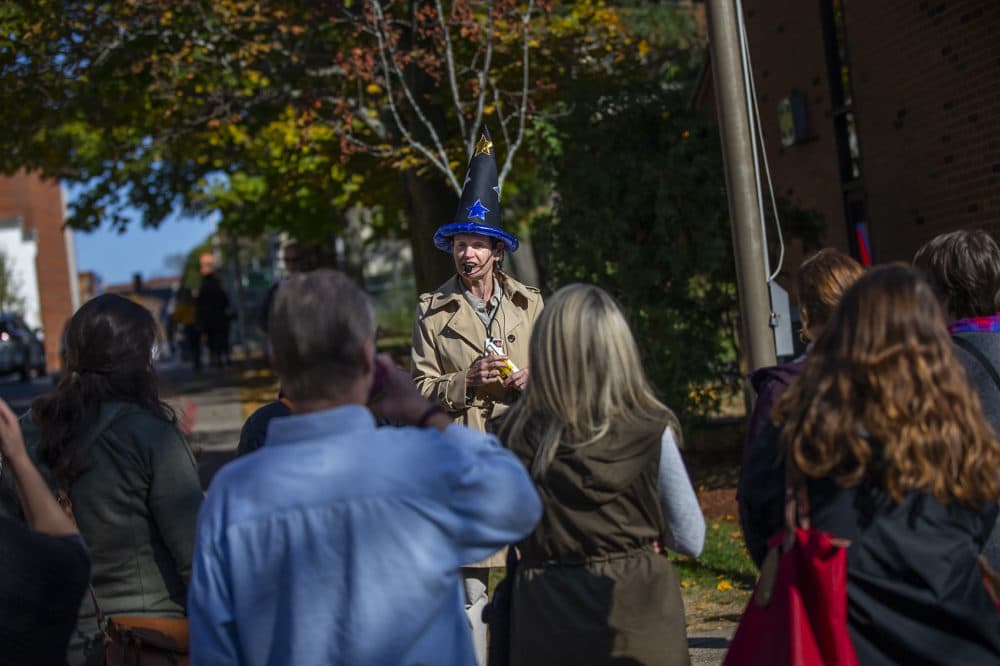
Popular movie witches inspired Mark Smith and Caylin Kloos to travel from Maryland.
“Every Halloween we watch 'Hocus Pocus,' so that’s about all we know,” they said in tandem. “We’ve been wanting to come for years so we finally just booked our trip.”
Now they’re eager to learn. Fox is well-versed in distinguishing holiday from history for tourists.
“The Salem witch trials do not have a direct relationship to Halloween, and the people who were accused and condemned in 1692 were not witches,” she clarifies. “They were innocent people and they were victims of a social crisis.”
Pop culture, including Arthur Miller’s 1953 play “The Crucible,” has fueled misconceptions and Salem’s witch tourism economy. Fox says many of the attractions, museums and more than two dozen walking tours can open visitors’ eyes.
Jeff Page leads one named “Bewitched After Dark” that stops at a bronze statue of Samantha from the iconic TV show “Bewitched.” It briefly filmed in Salem in 1970 for a plot where Samantha, played by Elizabeth Montgomery, attends a witch convocation only to end up being chased around by a seemingly possessed, floating bed warmer.
Advertisement
"Once those episodes aired people come from all over the country to get a look at the Witch City,” Page explains to this day’s group. “About that point, we start painting witches on everything in town. You guys seen our police cars yet? There’s a witch on ‘em.”
Fox thinks Samantha is the most photographed landmark in Salem, but visitors don’t really ask how or if it really fits in with history. “They take pictures, twinkle their nose and off they go.”
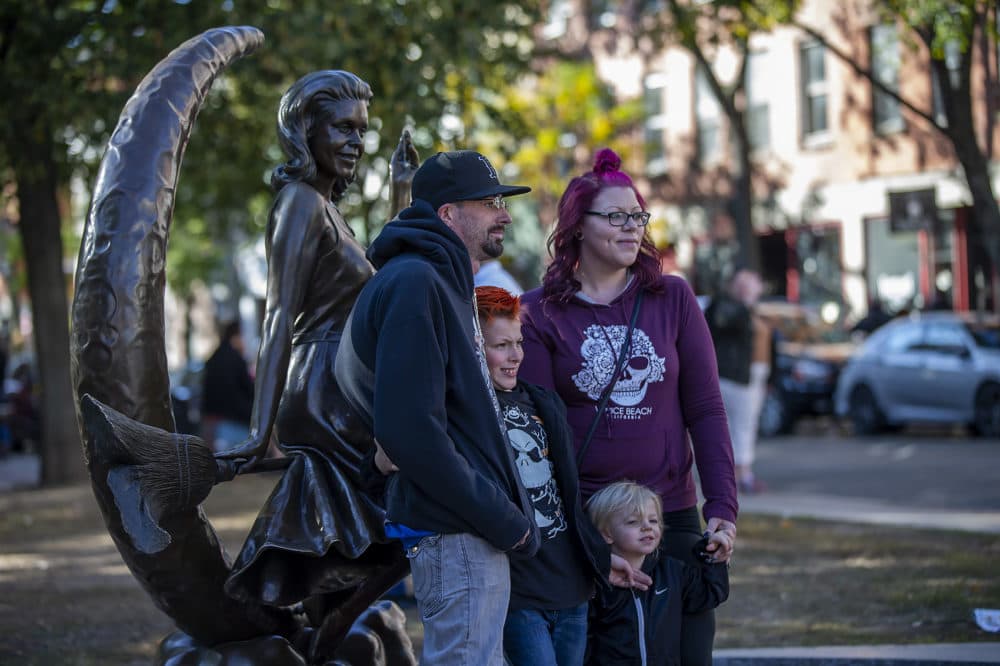
This attraction that's courted controversy in the past gets a major uptick in October. According to Fox, more than one third of Salem’s annual tourism spending is generated this month at an estimated $42 million.
A short walk from the Samantha statue, people can participate in a history-based re-enactment called “Cry Innocent" at the Old Town Hall.
“Now good people, has anyone here served on a witch craft jury before?” an actor asks people seated in rows on the historic building’s second floor.
“Cry Innocent” is an immersive way to learn about Bridget Bishop, one of more than 200 Puritans accused of being a witch. Kristina Wacome Stevick, artistic director of History Alive, the theater company that produces the show, says people in the audience can ask questions and vote on her fate.
"They learn of course at the end of the show that Bridget Bishop did historically go to trial," she tells me, “and she was convicted of witchcraft and she was hanged on June 10, 1692.”
Stevick says the show allows people to dip a toe into history and she’s observed a more informed Halloween public over the 25 years she’s been working on the re-enactment.
“Even while Salem is drawing people who want to just kind of have a party atmosphere, it’s also drawing people that have done the research before they've gotten here,” she says.
For Stevick, the tension between witch trial history and the horror characters associated with Halloween seems to have started in the '90s in the form of “tours and attractions about Dracula or Frankenstein — or stuff that really just has no connection whatsoever,” she says, laughing. “I think one of the unfortunate ways they interplay is that the witchcraft hysteria seems fictionalized.”

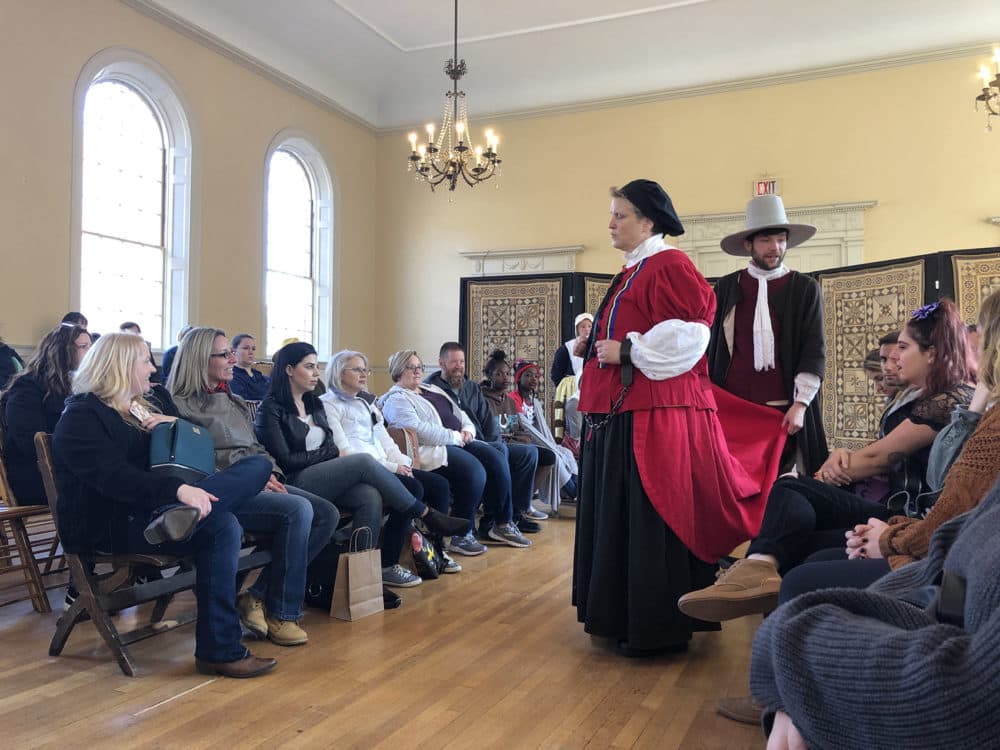
The full, fact-based story unfolds dramatically at the Salem Witch Museum. Visitors from around the globe sit on stools in a dark room surrounded by stage sets that look like life-sized dioramas lining the walls.
The audience is guided through a 45-minute presentation on what drove the Puritans to accuse and execute members of their community.
“Do you believe in witches?” a narrator with an ominous voice intones. “Millions of your ancestors did.”
Assistant education director Jill Christiansen says in October 60,000 people pass through the Salem Witch Museum after waiting in lines that stretch down the street.
“There'll be people who ask, ‘Are things going to jump out at us?’ " she explains. “And we say, 'No, it's not spooky. It's a tragic story.' "
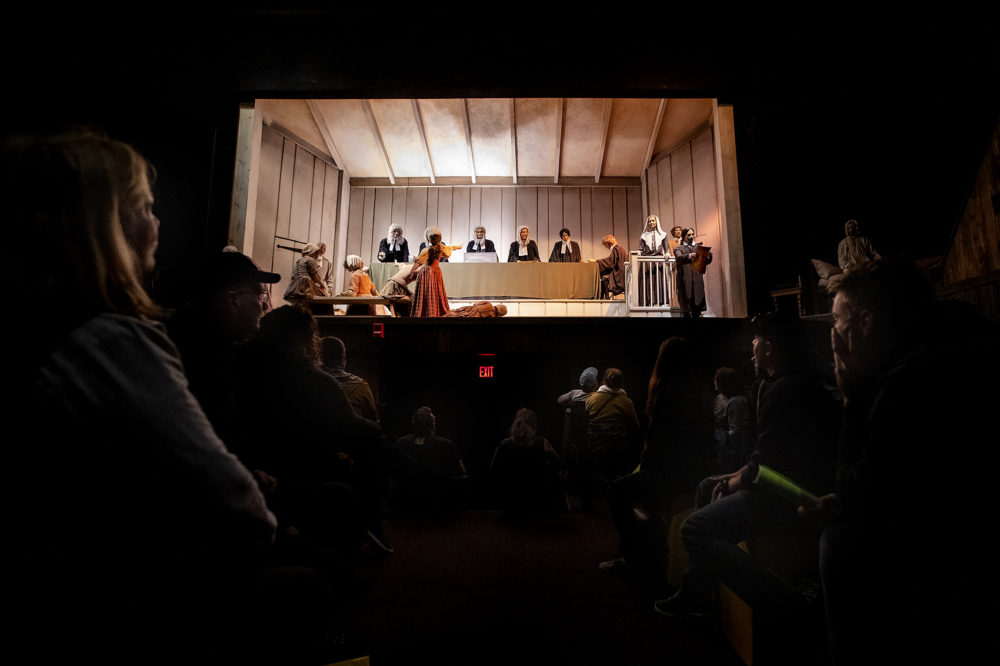
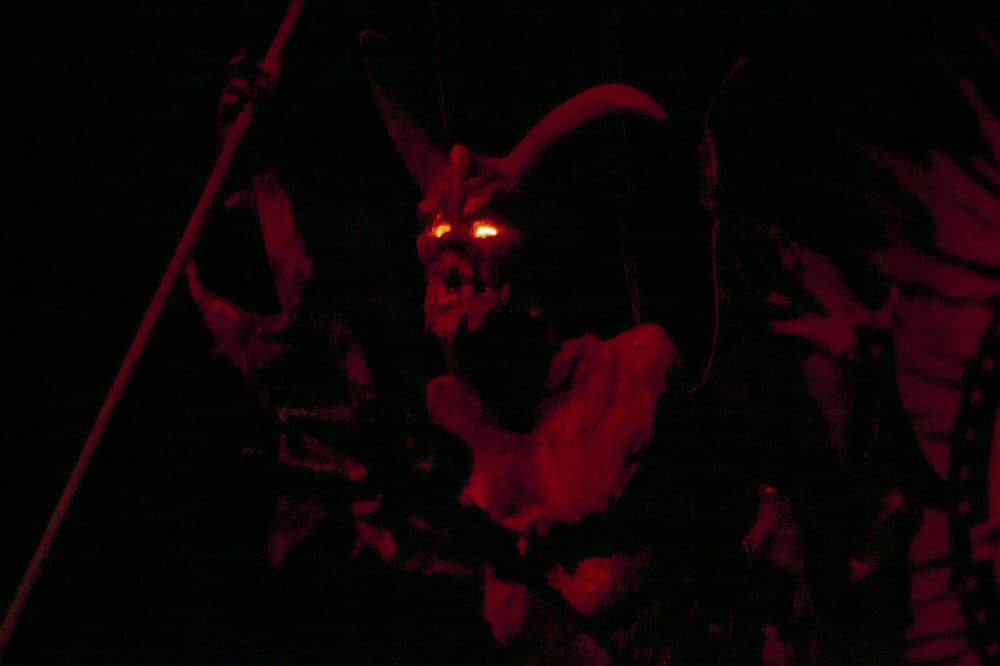
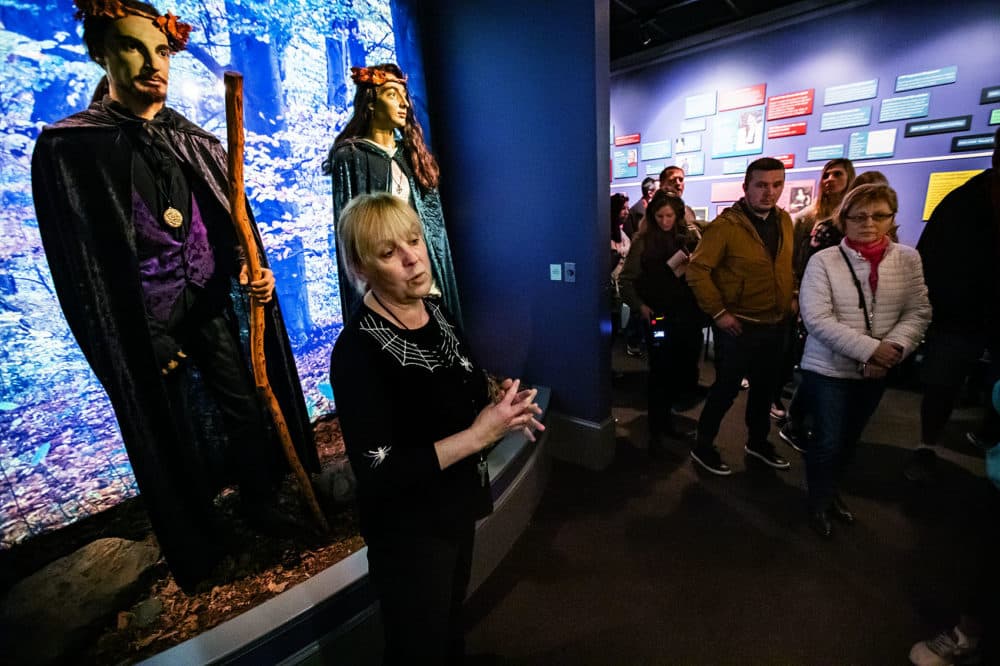
Christiansen spends her days debunking myths including that the accused were burned at the stake. Kate Fox says corrections play out a short walk from the museum at the historic Charter Street Cemetery. Many people mistakenly believe this is where the "witches" are buried.
“And we correct them,” Fox explains. “The victims of 1692 were not entitled to Christian burials. They're not actually buried anywhere that is known.”
This October the cemetery is closed for preservation, but Fox says it’s usually overrun with tourists who even take chips off the gravestones.
A memorial dedicated to the accused in 1992 is right next to the cemetery. It was built as a peaceful place for visitors and descendants to contemplate the extreme injustice the witch trial victims endured. With the sounds of Halloween revelers in the distance, Roberta O’Connor connects their brutal experiences from centuries ago to what’s happening in 2019.
“People are being scapegoated today, and [they] were scapegoated before the trials,” she says, “and we must continue to remember and speak up against injustice in our world."
O’Connor co-chairs the nonprofit organization Voices Against Injustice that stewards the park and its inscribed granite stones, one for each of the 19 men and women accused of being witches. She says it can be tough to get tourists to stop at the memorial during October, but she hopes they will to consider how many of the victims were women, were poor and were oppressed.
“They refused to confess to something they had not done,” she continued, “by speaking up for themselves, they essentially were condemned to death. So we hope that when visitors go home, they remember what happened here.”
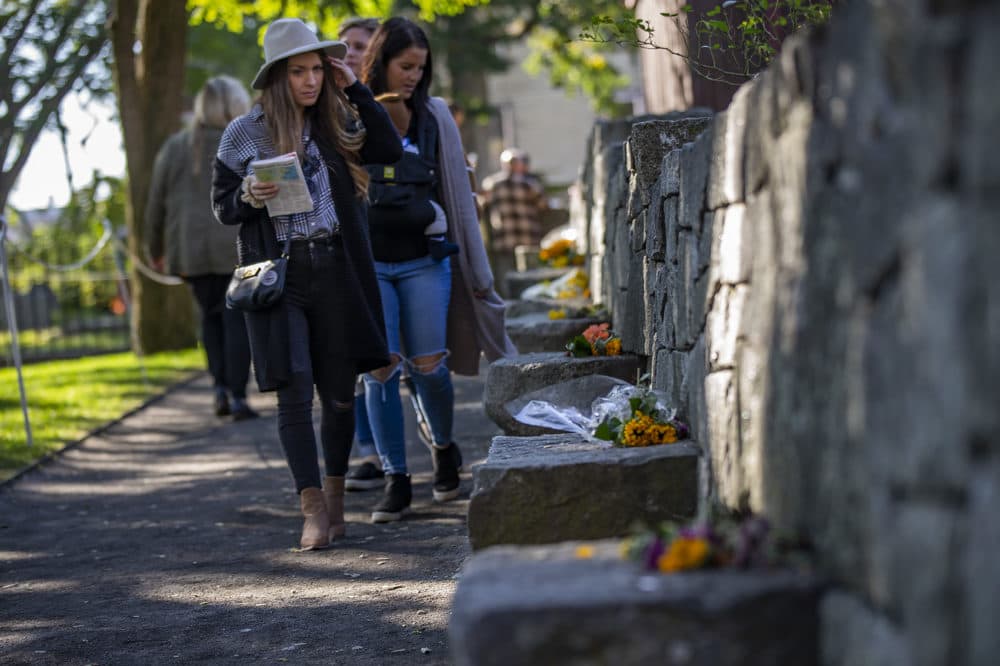
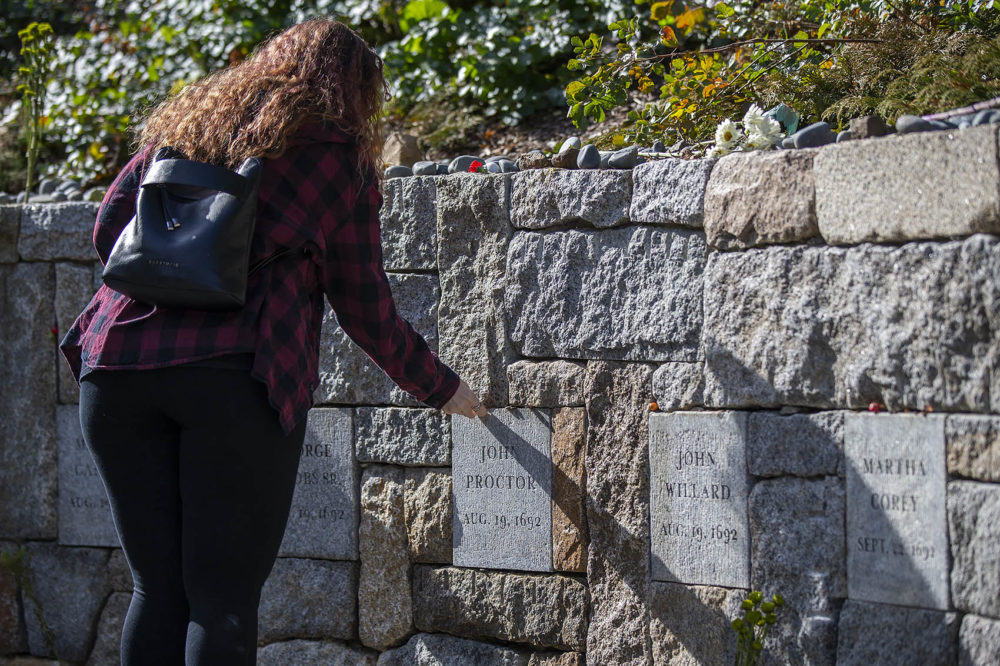
Later in the day Mayor Kim Driscoll meets me at the memorial and says the lessons learned from the victims’ persecutions are alive in Salem.
“I think what grew out of the witch trials is a community ethos around inclusiveness,” she says as the wind blows through the trees. “It's a pretty accepting place. If there’s a lasting legacy, we want it to be how do we fulfill that ... as our mission?”
Then there are the descendants of the accused that live in Salem.
John Keenan grew up in the city and agreed to meet me away from the holiday crowds at the newest witch trials memorial. In 2016 scholars discovered Proctor's Ledge was the location where John Proctor, Rebecca Nurse and 17 others were hanged. As a kid Keenan played in the woods here, which is down the street from his grandmother's house. He's now president of Salem State University.
“As a lifelong resident and as a descendant of Rebecca Nurse I understand and appreciate what Salem has done to educate others about that history,” he says.
Sharing that history means welcoming visitors to the former manufacturing city and its businesses that now rely on tourism dollars.
Hex Old World Witchery sells touristy stuff like shot glasses, but also supplies for real magical practice including candles, herbs and brooms. Leanne Marrama is a full-time psychic and a modern witch. She gives hundreds of tarot readings at her purple-clothed table and loves seeing little girls dressed in witch costumes. But she says there are times when the October crowds can be disrespectful.
“I've seen costumes where people are dressed as Pilgrims with nooses around their necks,” she says. “But if they stay a little longer, that noose around their neck will feel a little tight because when you really read what happened, you'll be able to pause and think — maybe we’re living a little bit of this history right now.”
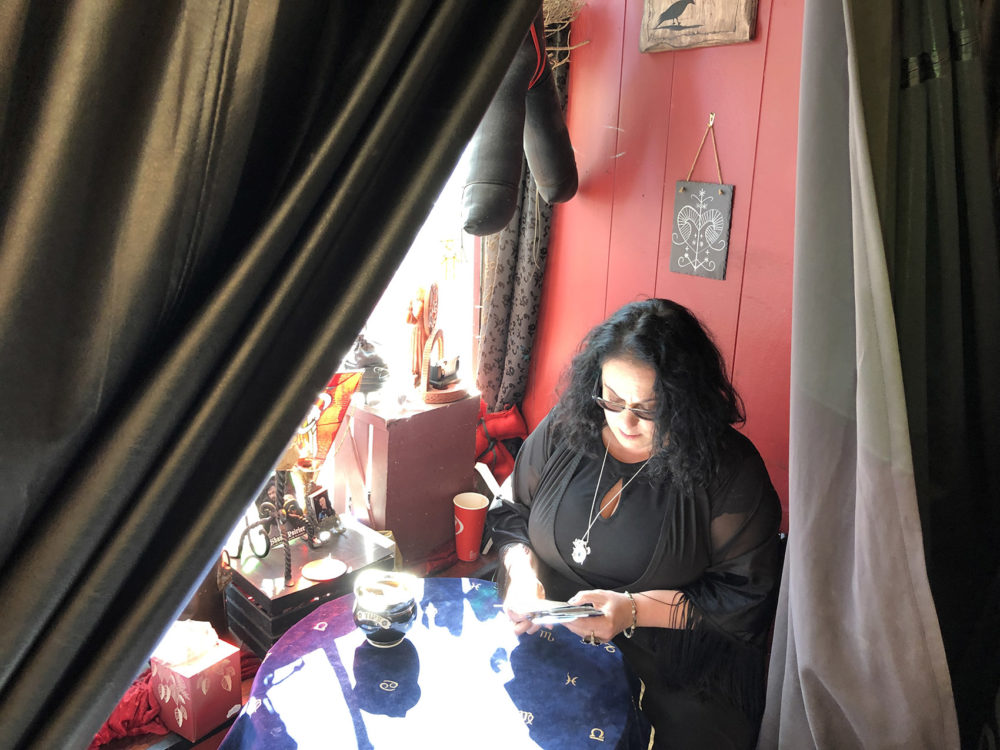
But Marrama says Salem is a place where people can feel free to be, feel and wear whatever they want and not just in October.
“People have called this city a tourist trap. But it isn’t — it’s an awakening for a lot of folks,” she believes.
Marrama says today's Salem has always accepted her and other 21st-century witches who celebrate Halloween as a high holiday. And she adds there's nothing wrong with having fun in a place with a dark past. In fact, she welcomes the opportunity to teach tourists about her home.
City officials estimate upward of 50,000 visitors brave road closures on fair-weather Halloweens. Come Nov. 1, Salem might just feel more like a quiet ghost town than “Witch City” — at least for a day — before it gets down to the business of planning for next Halloween.
This segment aired on October 30, 2019.
